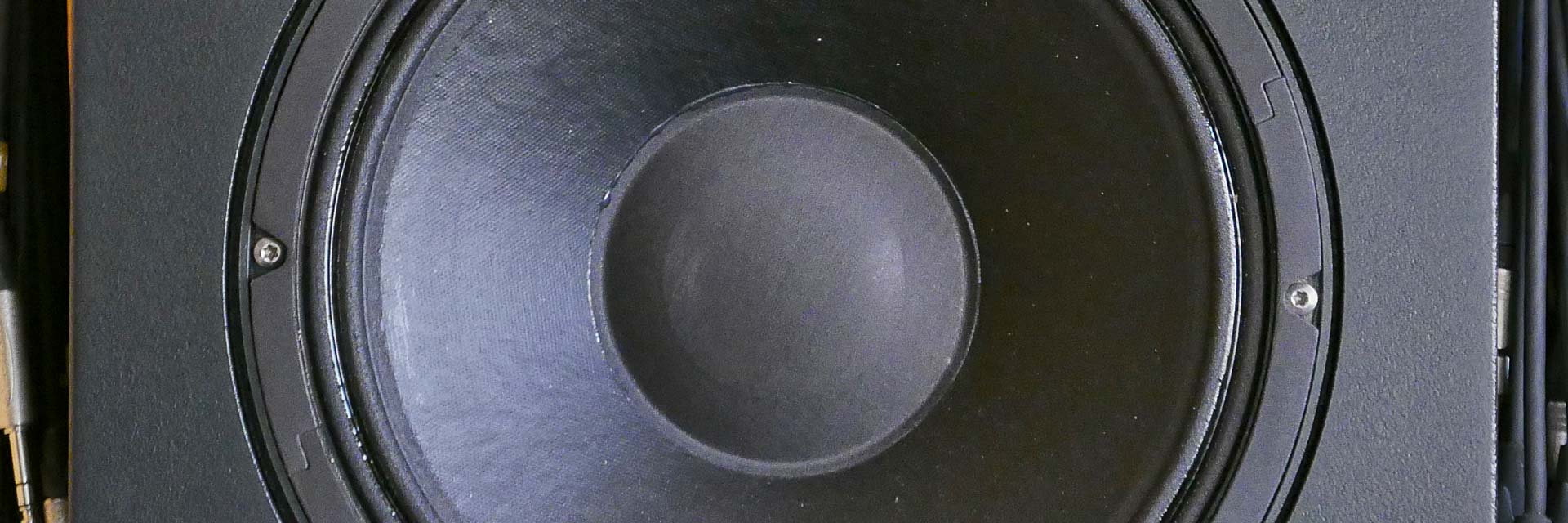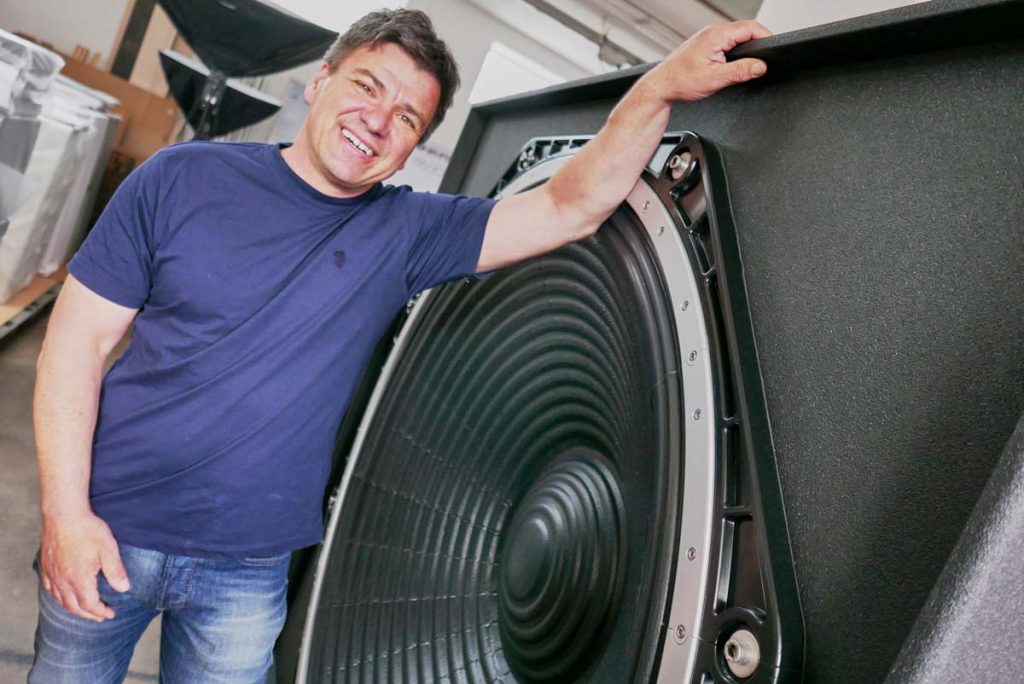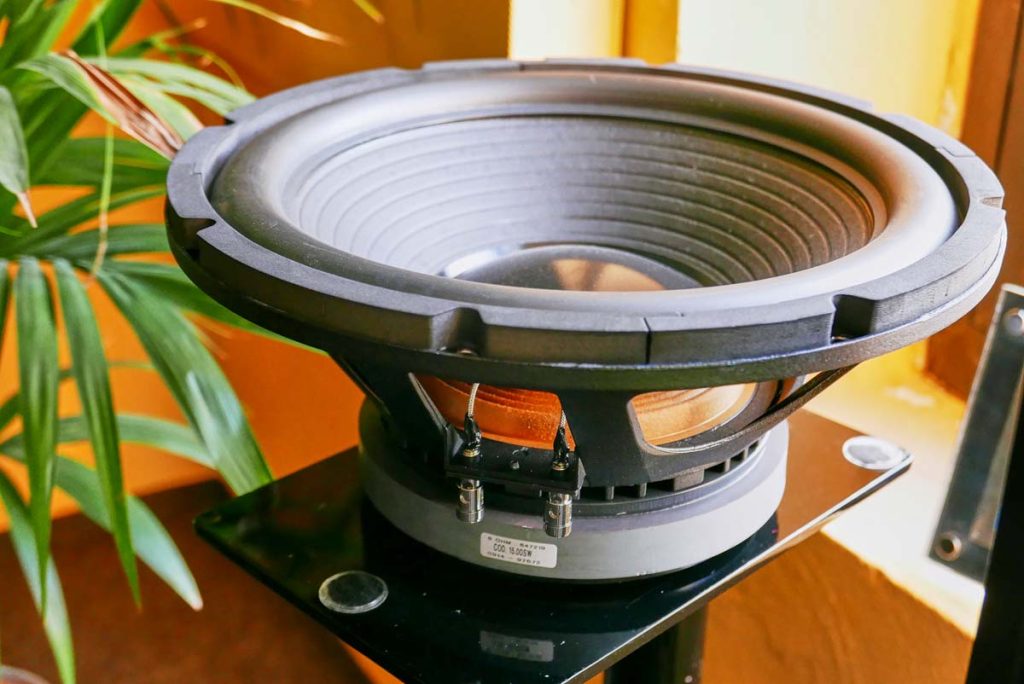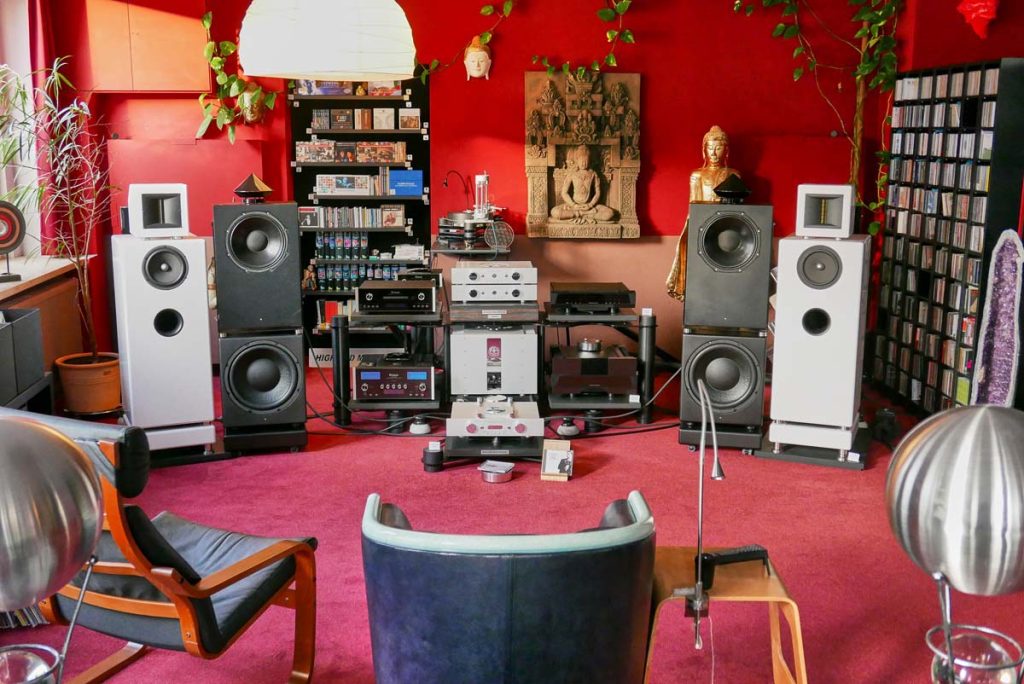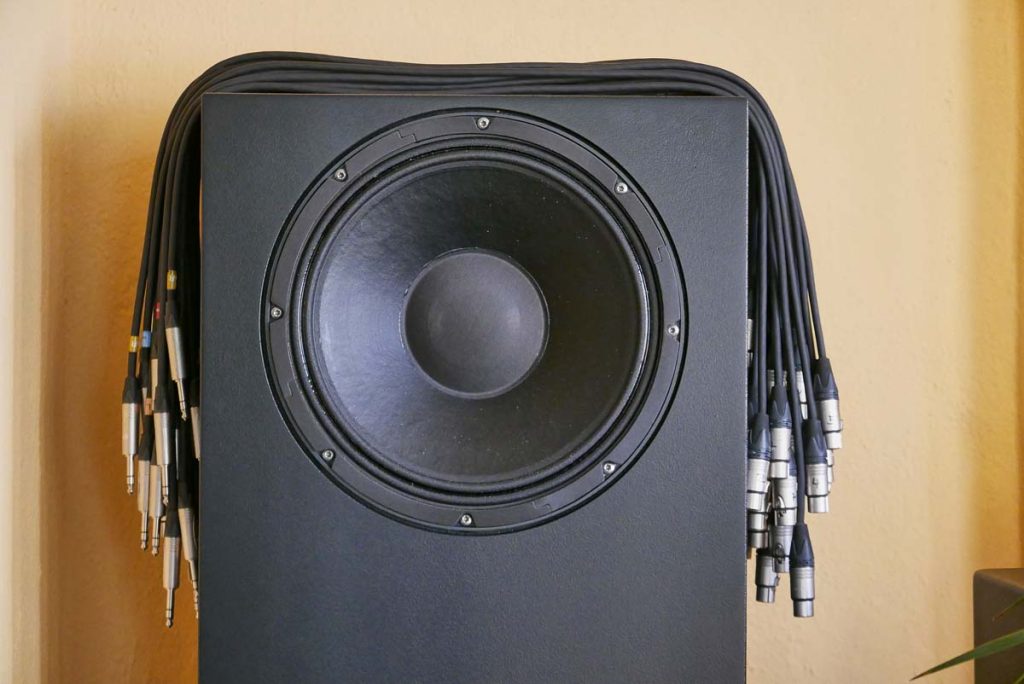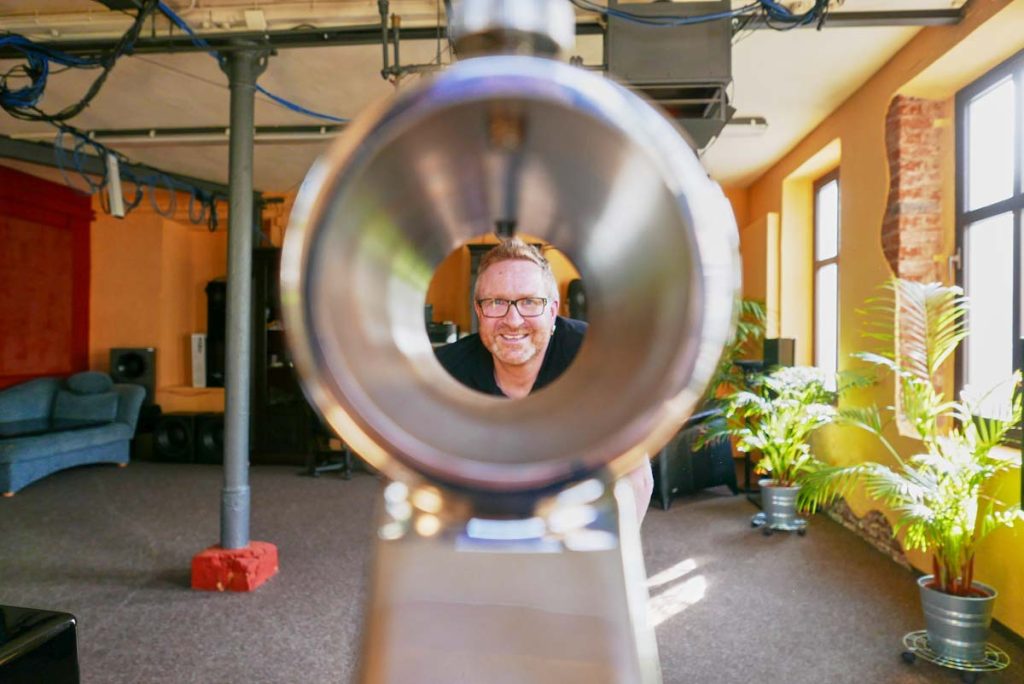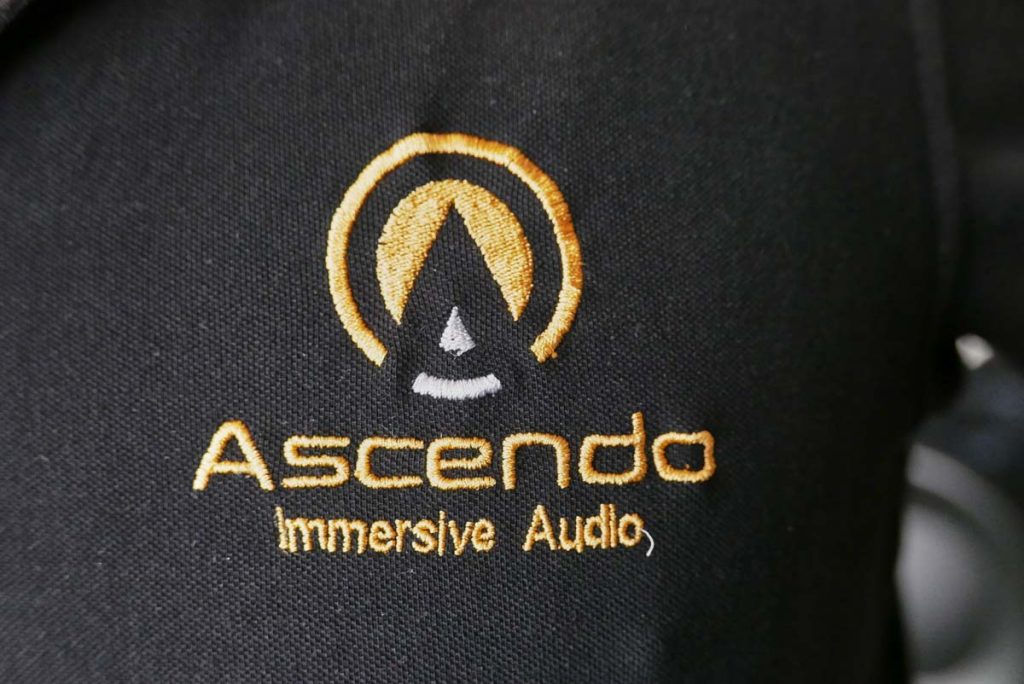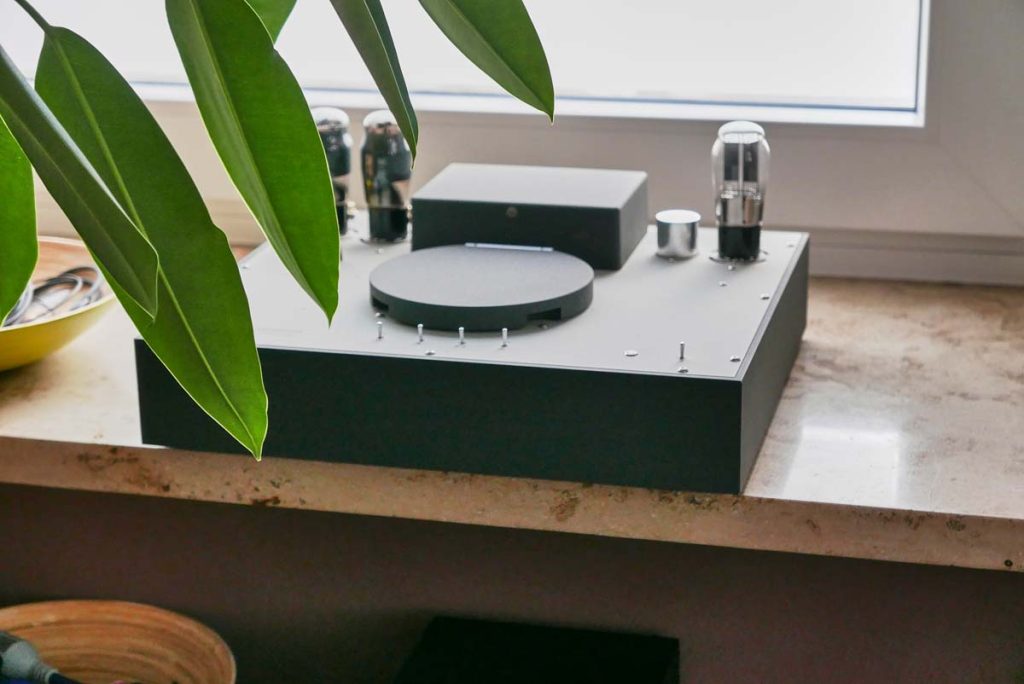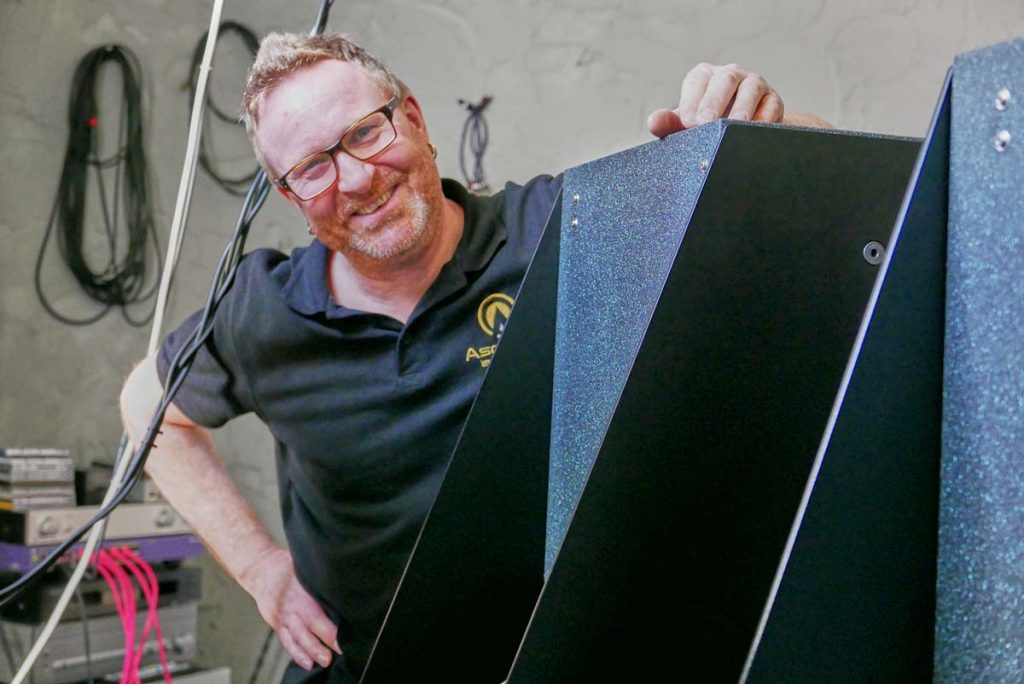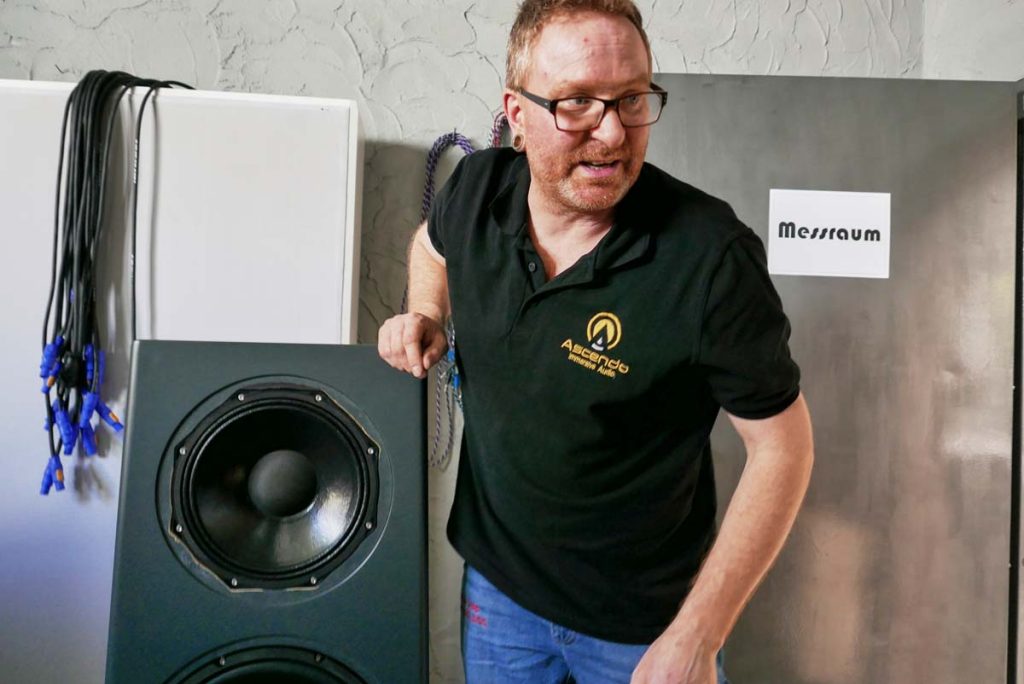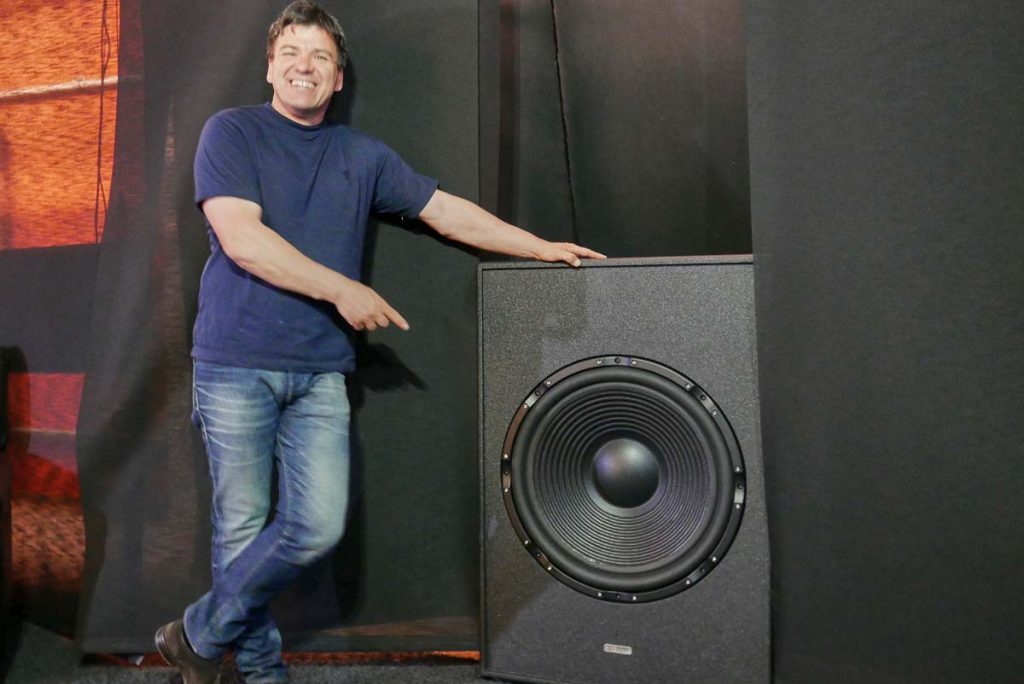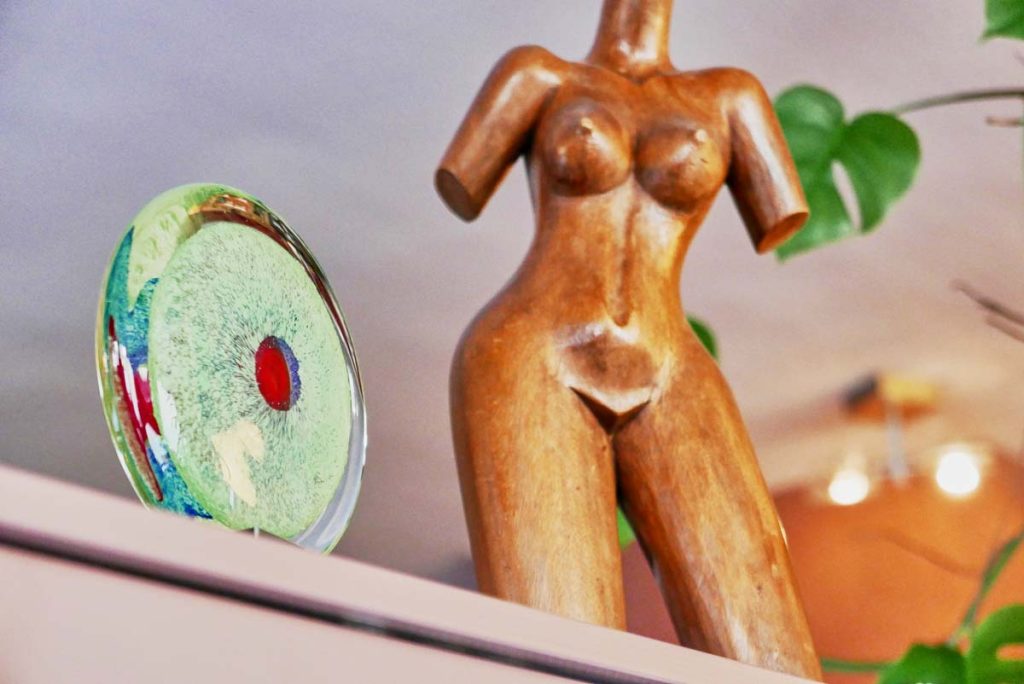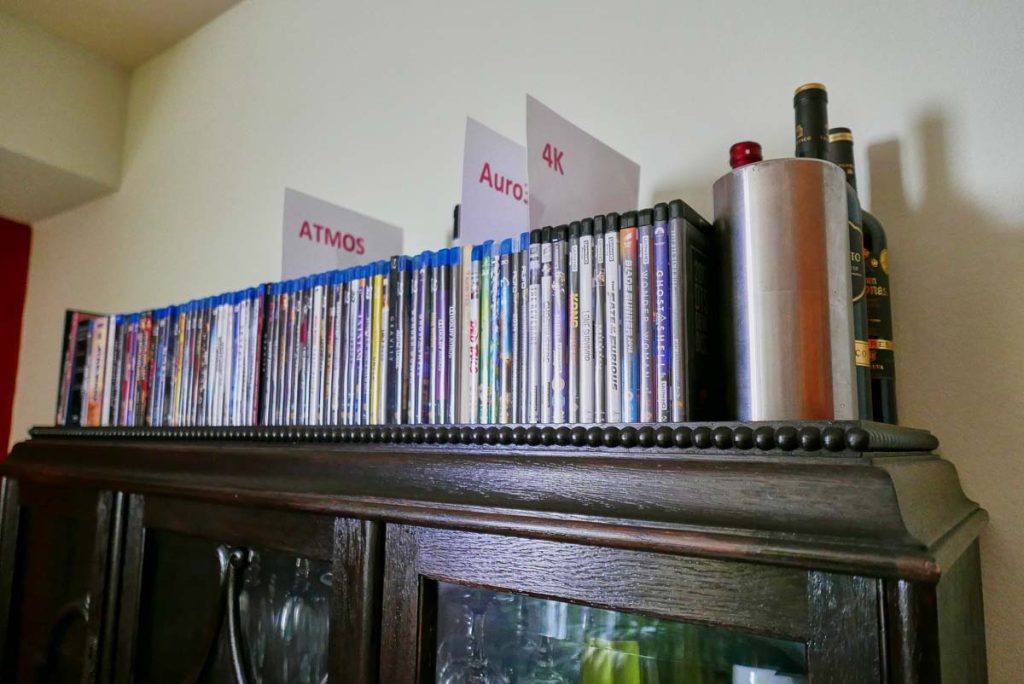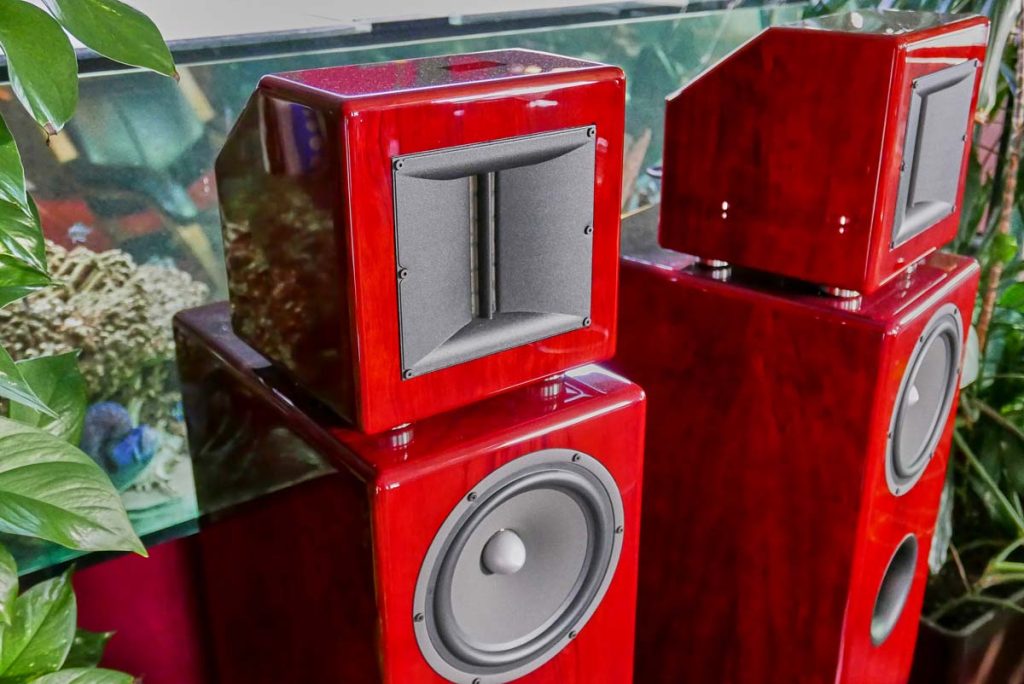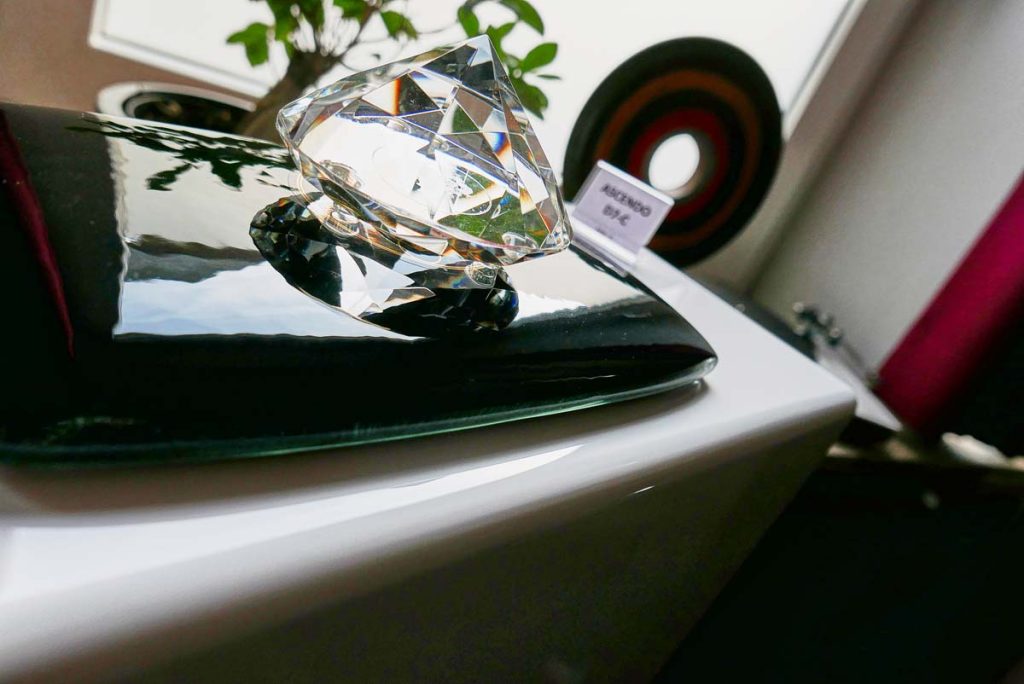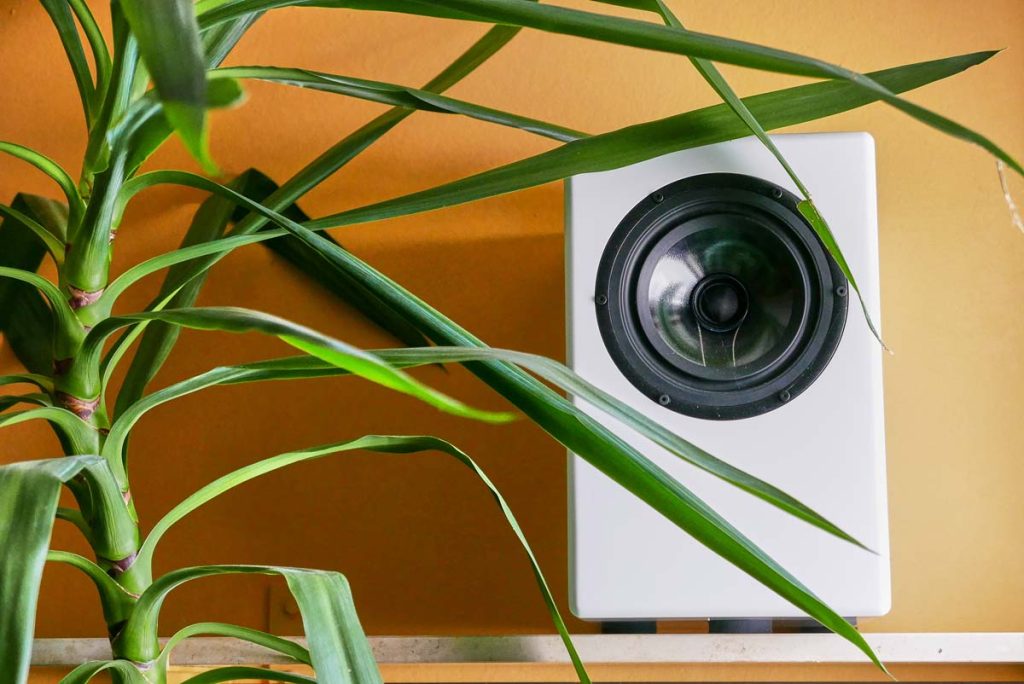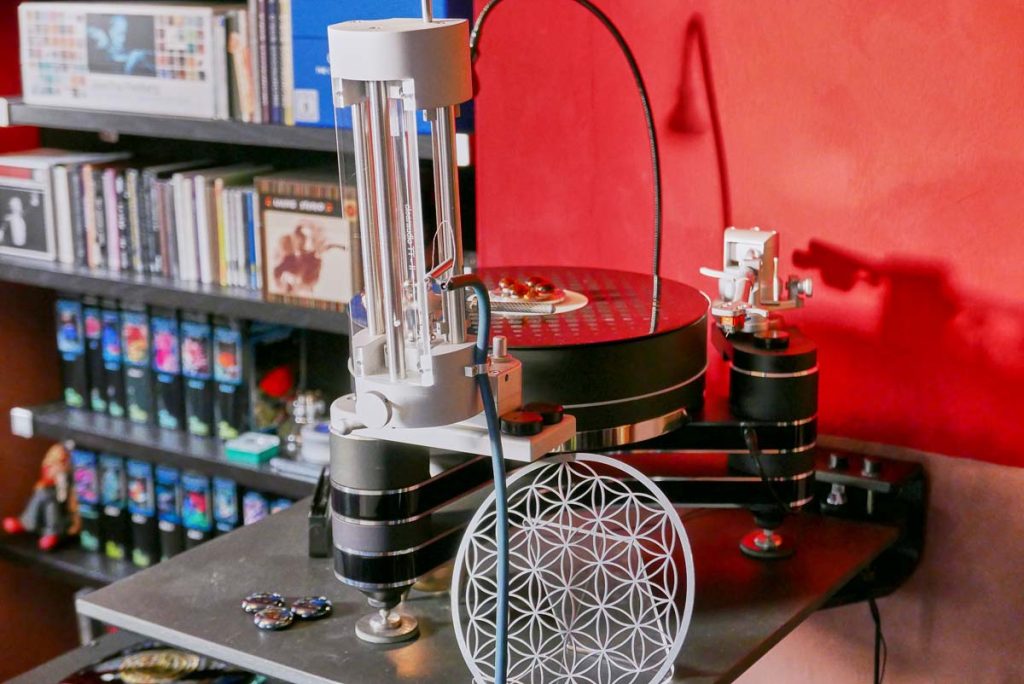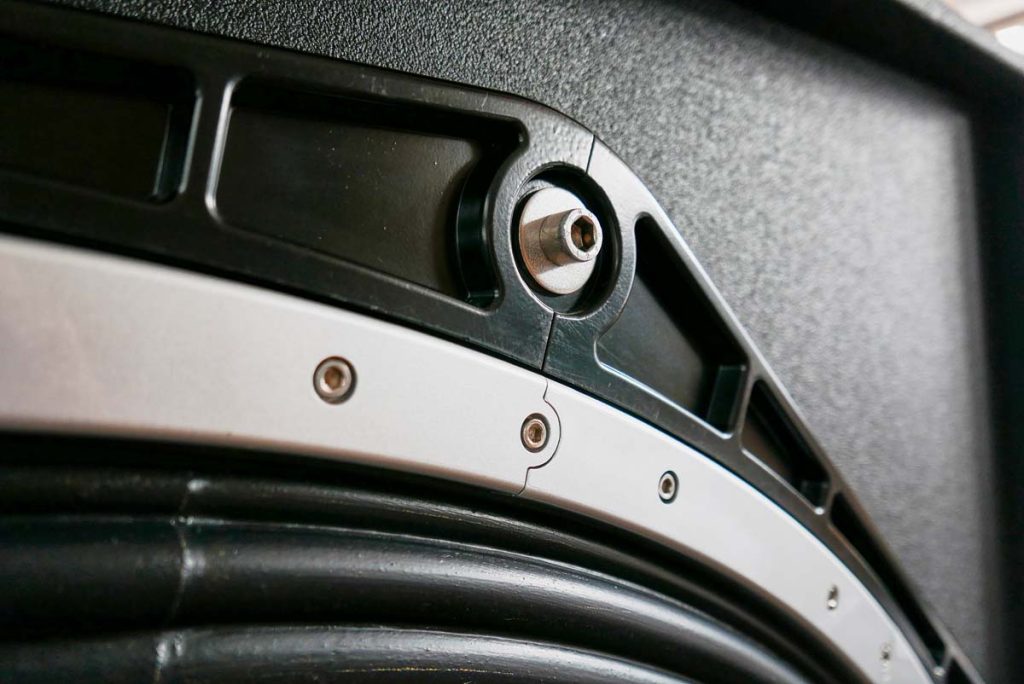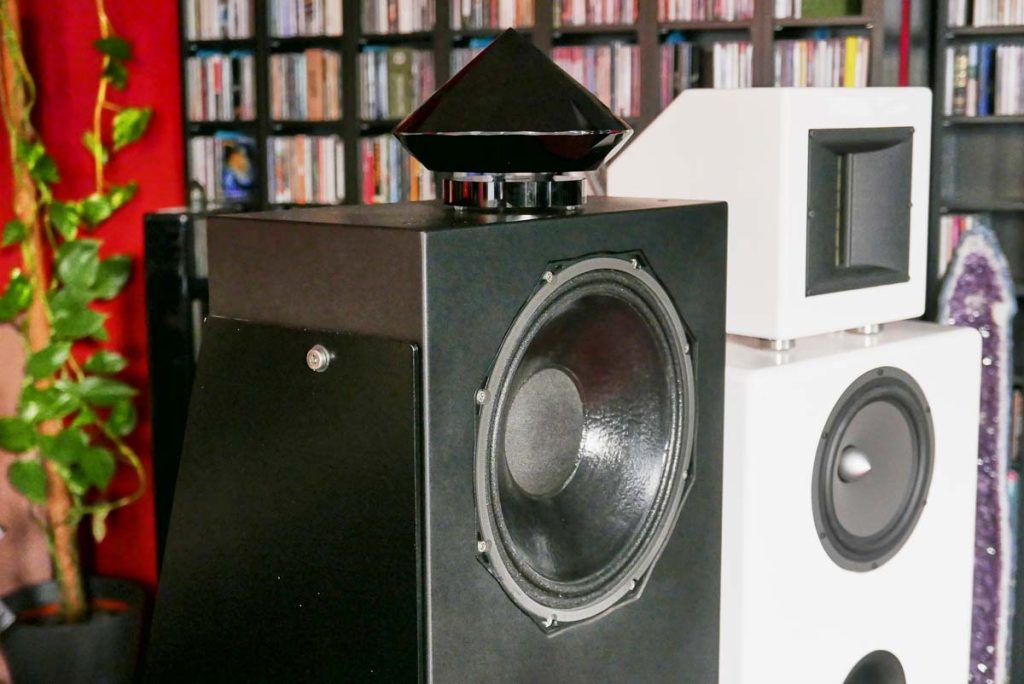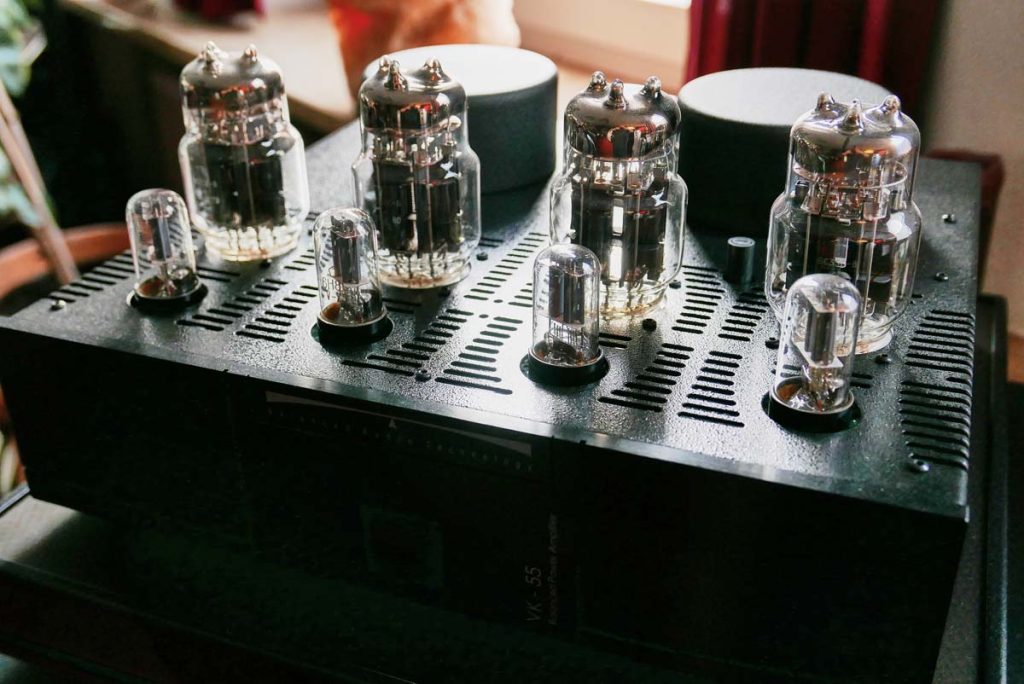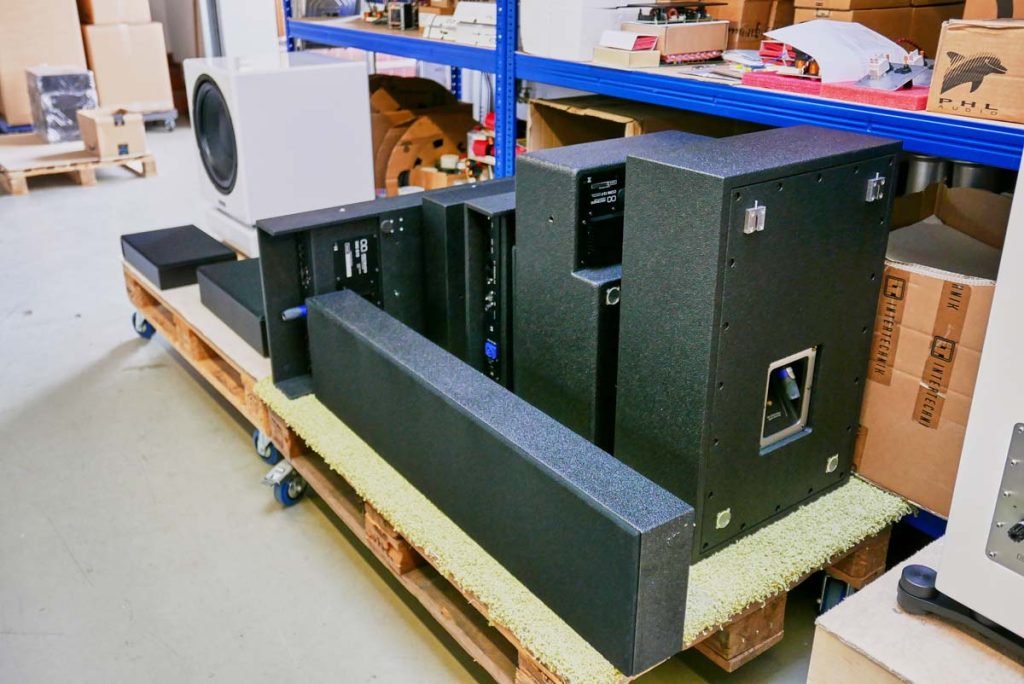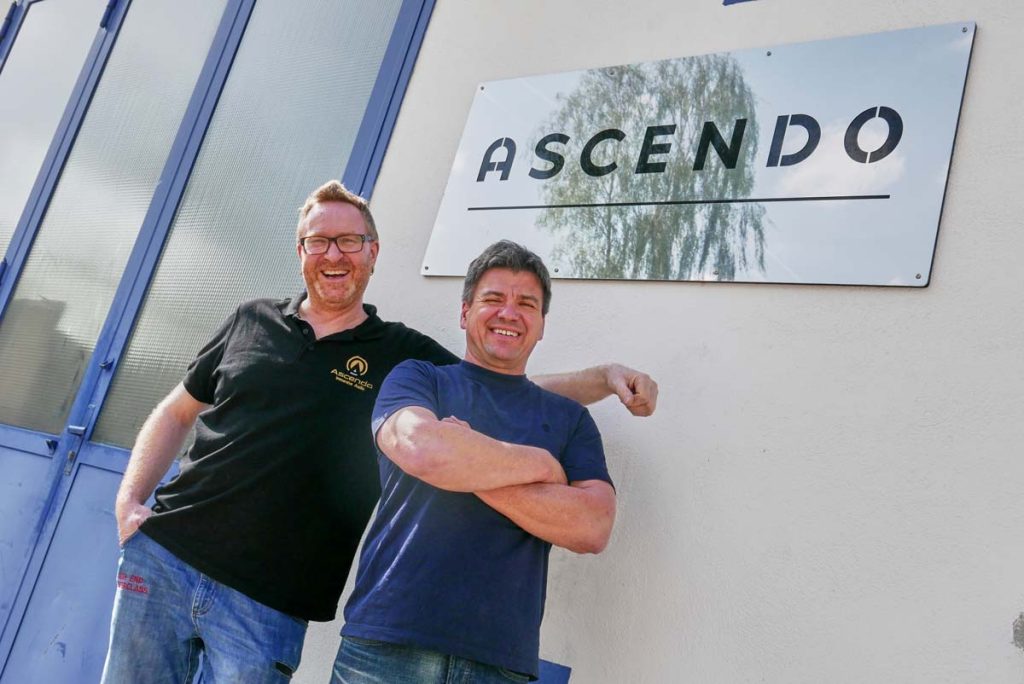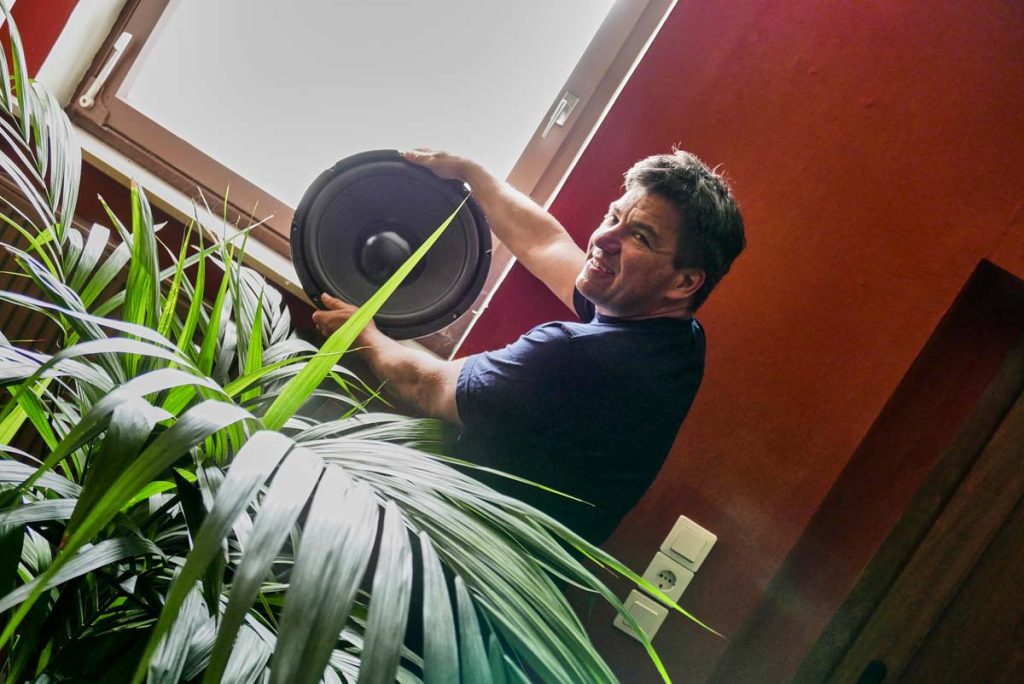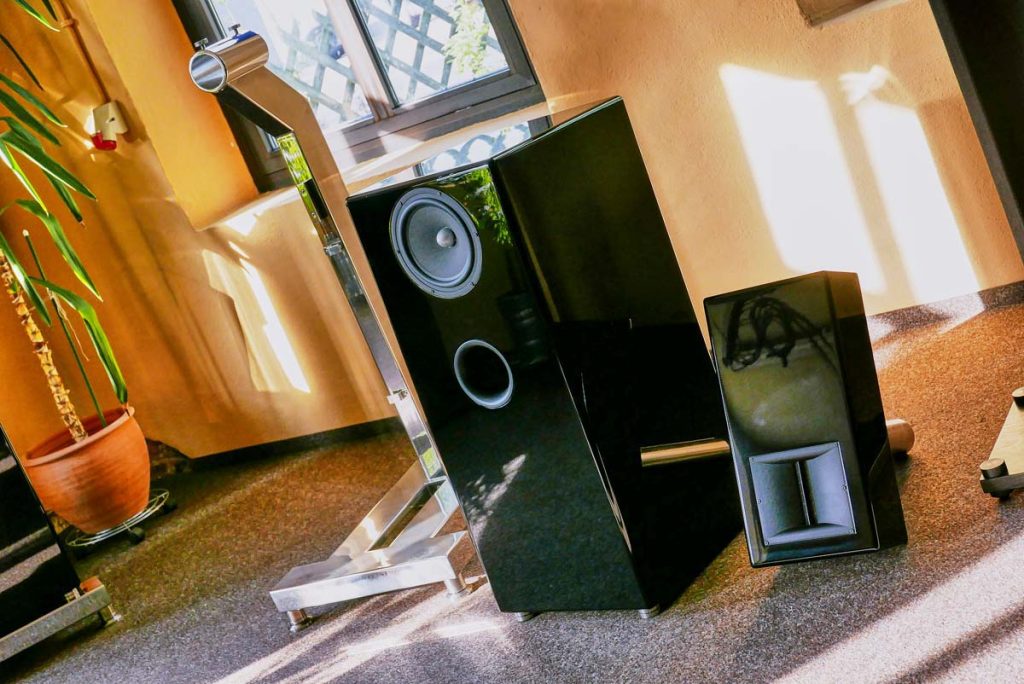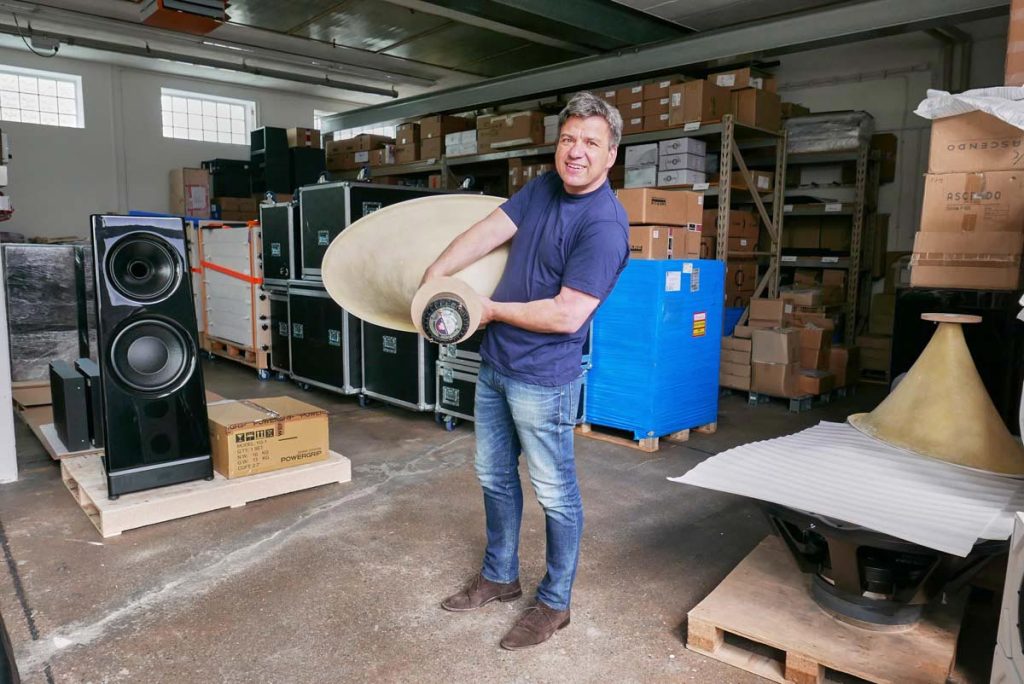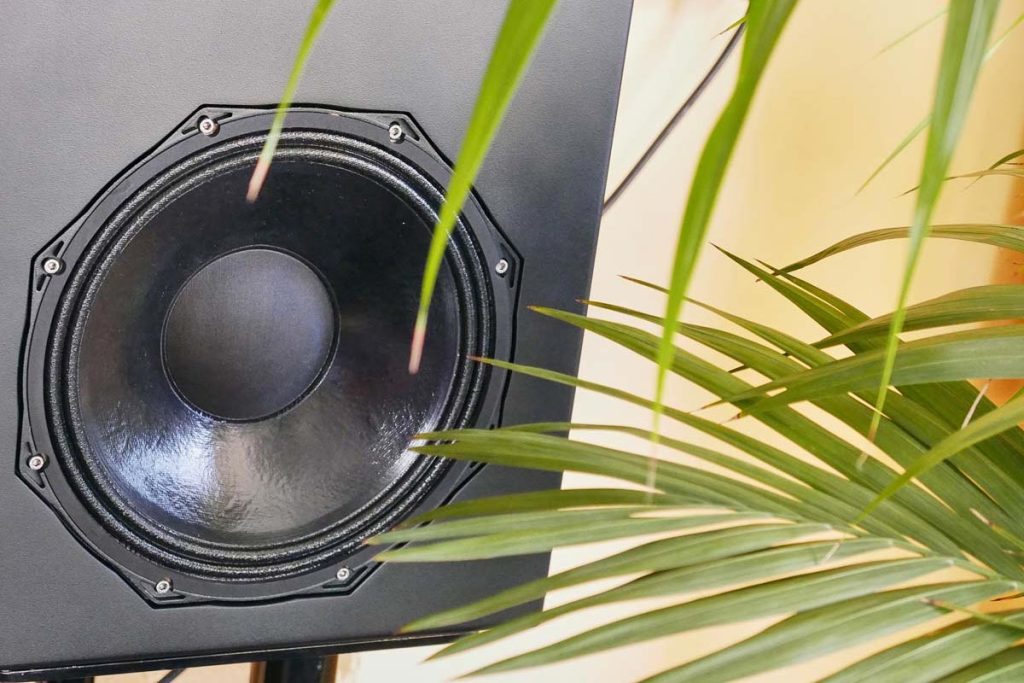Coaxial Core Competency
Professional speakers, bass that reaches infernal depths, and high-tech wizardry: Why Ascendo is so wickedly good.
“Please sign here.” Anyone who purchases Ascendo’s largest subwoofer will see this twice. First, in the sales agreement. And second, in the liability exclusion statement — operate at your own risk! Owners are liable for their own woofers!
This is not a joke: Ascendo’s largest subwoofer is so powerful and so heavy in the bass it could actually place the structural integrity of your building in jeopardy — unless, of course, you live in a bunker, a pyramid, or a similarly solid structure designed to last for all eternity. Please bear that in mind before ordering the 500-kilo hulk for your thin-walled student flophouse or your vacation cottage speed-built by a band of unskilled Egyptian workers.
In all fairness, we should briefly outline what the term “large subwoofer” actually means at Ascendo. And what this rather discreet, high-end, small-scale manufacturer offers in its product range. As well as who’s behind all this calculated yet lovable madness. Not to mention what “Immersive Audio” in the company name and Galgenmühle in the company address mean. Plus why the whole thing is so much damn fun! Even without a second signature.
And so one beautiful summer morning, we rolled up to Ascendo Immersive Audio GmbH’s courtyard in Ansbach located in west-central Franconia, a history-rich region of Germany. Here’s where all the production work takes place and where suppliers make deliveries; the company’s headquarters are actually located in Karlsruhe. The centuries-old central structure in Ansbach is actually the city’s former courthouse, which was gradually extended into the shape of a “U,” a plaque above the main entrance tells us. The basement still even houses the old detention cells. The Galgen, or gallows, in the company’s mailing address, used to be located on a small hill at the courtyard entrance. These were dismantled many moons ago though, says co-boss Stefan Köpf, who ought to know seeing as his last name literally means “head.” He leads us into the time-honored premises where not only professional-grade technology and manufacturing operations have been harmoniously integrated but also a monster of a home movie theater for connoisseurs.
Stay calm, dear FIDELITY readers and stereo fans! This article isn’t going to be about impressive moving pictures, rather impressive moving sound. And this is something Ascendo fine-tunes in its in-house movie theater, among other places. With music. Okay, yes of course, with moving pictures, too, but by no means exclusively or all that often. The focus of any fine-tuning at Ascendo is and always has been on the listening experience! And, of course, that also applies to movie-theater equipment and subwoofers. This brings us nicely to the explanation of the first term: What exactly constitutes a large subwoofer?
I know some high-end fans who refer to any woofer with a diameter of at least 15 centimeters (6 inches) as “large.” However, these are also the kind of people whose best hi-fi experience has involved near-field studio monitors such as the LS3/5A and have since then fundamentally considered anything below 80 hertz to be low-bass interference. Or at least as an attack on the “crisp bass” of their beloved favorites (as Linn Kan and LS50 owners, we know our stuff).
But among grown-ups, 25 centimeters (10 inches) should constitute the absolute minimum for anything considered close to “large.” And 38 centimeters have to be reached before everyone finally agrees: 15 inches is the international standard measurement for impressive subwoofers. This size enables enough air to move properly and, with the right fine-tuning, the creation of an acoustically super-solid base. In hi-fi settings, a properly driven 15-incher will confidently stride down into the officially recognized frequency crypts of 20 hertz — the realm of organ principal pipes — forge ahead with ease, and, it seems, add a whole ’nother dimension to the enjoyment of great music. What many hi-fi friends (still) don’t seem to know is that a good subwoofer won’t roar or boom but will acoustically open and “illuminate” the room, making power tangible and ultra-low bass a physical experience.
Ascendo also believes this, by the way. This is why the loudspeaker experts sell three powerful subwoofers with perfectly proportioned 10-, 12-, and 15-inch drivers. What’s more, all of them feature built-in 1,000-watt amplifiers and in-house-developed super-flexible calibration electronics.
But that’s not all that Ascendo IA has to offer — not by a long shot. The hip and innovative southern German engineers have another three subwoofers to boot, and they effortlessly manage to throw all remaining reason out the window. They feature 24-, 32-, and 50-inch drivers — as big as Ringo’s bass drum, your average circular dining-room table, or your darling little kids’ paddling pool, all upright and built into an extremely solid box. With an available 6,000 watts of power, they’re extremely dangerous to your hearing and the building you live in!
Which brings us to addressing another few obvious questions. No, of course no one actually needs this. No, your neighbor in the villa opposite definitely won’t have it. And yes, if required, this can even trigger seismic shifts or set demolition work in motion. So listen up, supervillains, seaquake fans, and insatiable high-end lovers: Ascendo’s 50-incher is currently the largest and most powerful subwoofer on the planet. When you stand next to this whopper, you somehow feel dwarfed by it, unless you’re a two-meter-something basketball player from the NBA league in America. And when this demolition tool gets going, preferably with some hefty bass material, the world around you seems to crumble; the first cracks start to show in the room’s walls; and, standing slap bang in the middle of Ascendo’s listening room — which isn’t exactly reminiscent of a club — you start to feel like you’ve been transported to the dance floor of Berlin’s infamous “Tresor” nightclub. The pulsating bass massages not only your stomach but your entire body; your hormone levels rise to new peak levels, and you perceive music as a whole in a way the consumer-grade speakers mentioned earlier could never have done for you to.
At this year’s High End trade fair in Munich, event organizers limited the Ascendo team to demonstrating the 50-incher during precisely calculated times. Why? Because the low-bass thunderstorm created by this exceptional device contains so much penetrating high energy that the tonearms would jump, shoving their styluses out of the record groove when, for example, Hans Zimmer’s Da Vinci Code soundtrack was played. On the other hand, the existence of such sound information (which should not be confused with mere subsonic interference) is an indication that even the very deepest frequency crypts are part of the music and therefore have an inherent right to be heard as part of proper playback.
The skill level and in-depth background knowledge on display in Ansbach are just as impressive as the spectacular performance of the flagship subwoofers. On the company’s homepage, the manufacturer outlines the fundamental research it carries out in-house and promises “pioneering developments in the areas of hi-fi, home theater, and pro audio.” We need to expand on an important point here: Professional monitoring equipment, such as monitors used in recording studios, is not simply an important mainstay for Ascendo. Developments in this area actually also make their way directly into the line of home hi-fi products. Ascendo developer Jürgen Scheuring, who graduated from the University of Tübingen, has been dedicating himself for some time to coming up with (digital) methods of getting around the limitations of conventional speaker and amplifier concepts. When you talk shop with current managing directors Köpf, who holds a graduate degree in economics, and Scheuring, whose graduate degree is in physics, about speaker development, it doesn’t take long for buzzwords like “time alignment” and “digital sound processing” (DSP) to crop up: Unavoidable shortcomings, whether in the material or the room, are so delicately rectified with in-house-developed digital equipment that the end result is a fully natural sound. A sound that no longer involves hearing the interference with the frequency range or the delay corrections of the loudspeaker chassis. As the company’s ambitious goals could never have been achieved with components brought in from outside, the level of in-house development at Ascendo has been and continues to be exceptionally impressive. The development of new room-processor concepts is even being financed with funds from the German government.
Even the workmanship that goes into their speakers, which are deliberately designed to be straightforward and unpretentious (the exterior should correspond to the listening experience), meets the highest standards; the company bosses deliberately set the bar very high.
The fact that in Ascendo’s workshop you could also “eat off the floor” if one of the 50-inch subwoofers were to shake or blast a cake off its plate fits in neatly with an image of a high-tech manufacturer you’d probably expect to find in Japan than in the sedate city of Ansbach. And in the future, we’ll probably see a lot more from them than just low-frequency rolling thunder.
Ascendo GmbH
Bonndorfer Str. 19
76227 Karlsruhe
Germany
Phone +49 721 95139929
Production and freight deliveries and pick-ups
ASCENDO GmbH
Galgenmühle 5
91522 Ansbach
Germany
Phone +49 981 48798718

